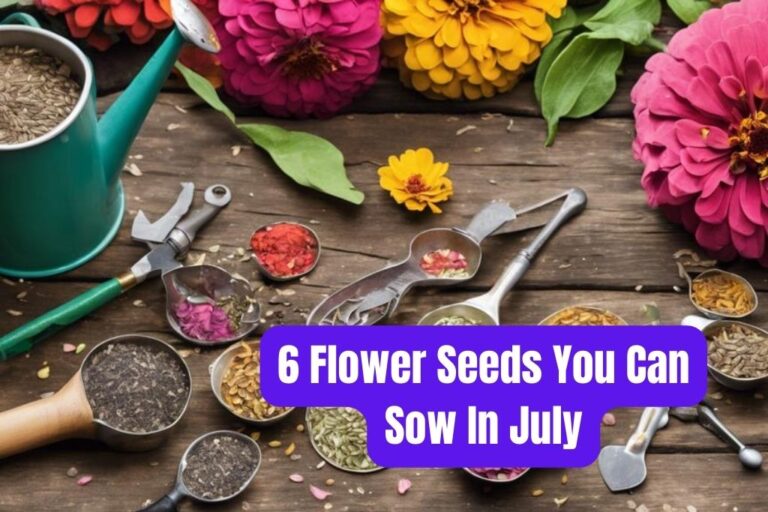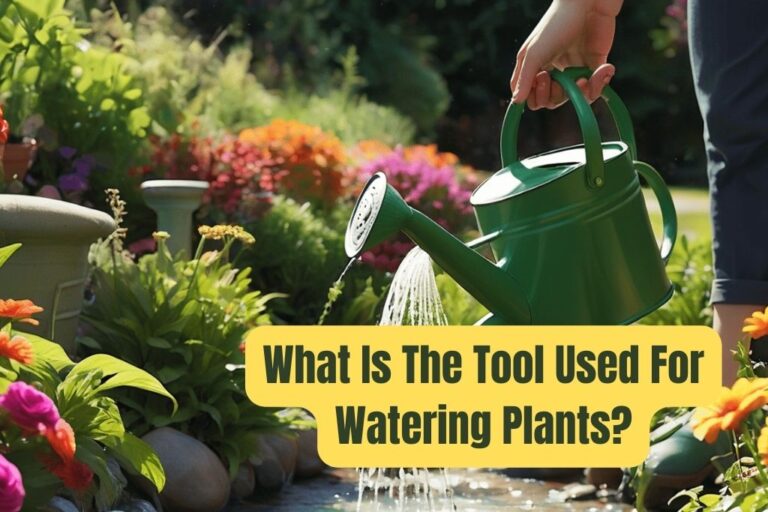Copper Gardening Tools Maintenance: Simple Tips For Longevity
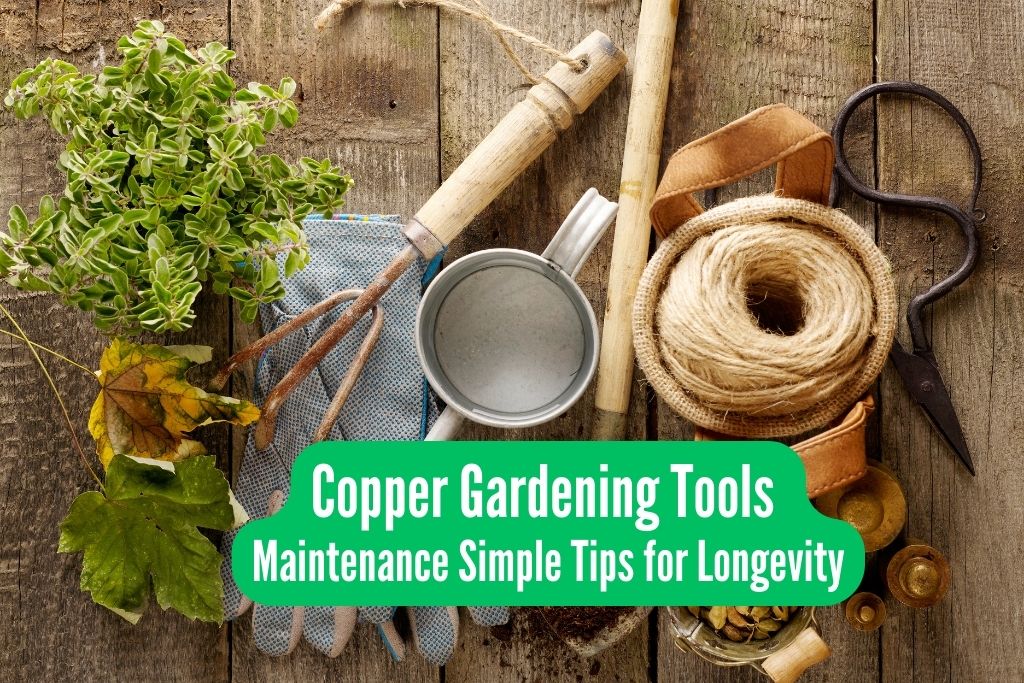
As gardening enthusiasts, we know that the right tools can make all the difference in the success and enjoyment of our horticultural endeavors. Among the myriad gardening tools available, copper gardening implements are particularly prized for both their aesthetic and functional qualities. These distinctive and attractive tools not only facilitate more efficient and pleasurable gardening work but also make a stylish statement in your yard or garden shed. However, like any valuable investment, it’s essential to properly care for your copper gardening tools to ensure they provide long-lasting service and maintain their beautiful appearance.
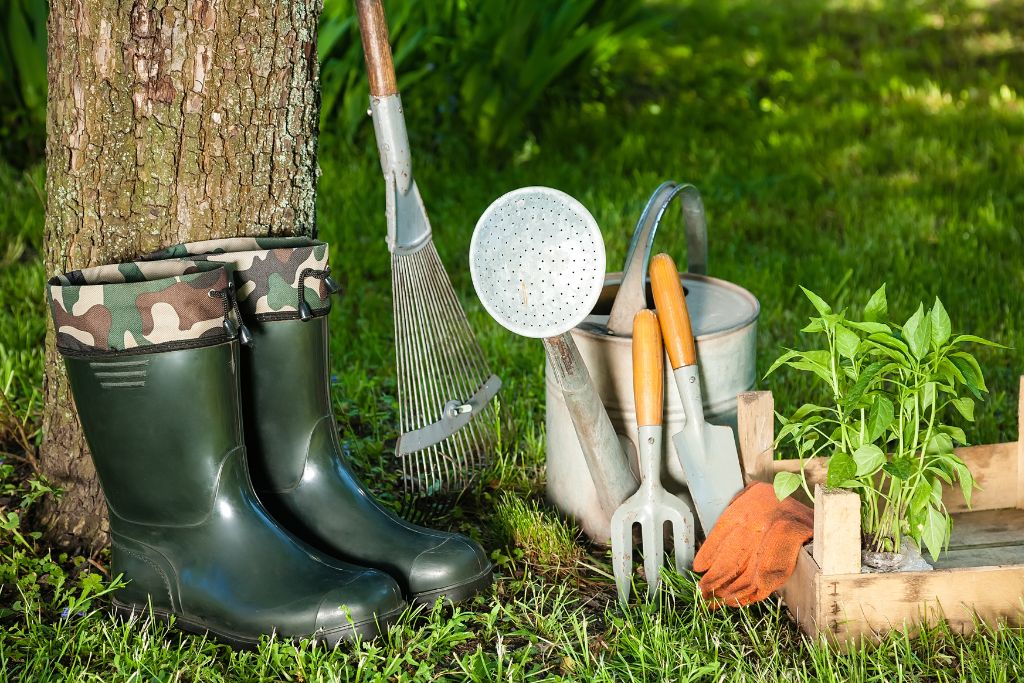
In this blog post, we’ll guide you through the simple, yet effective, steps to properly maintain your copper gardening tools. By incorporating these techniques into your regular gardening routine, you’ll not only keep your tools in optimal condition, but you’ll also contribute positively to more sustainable and environmentally-friendly gardening practices. Whether you’re an experienced gardener or a newcomer to the world of horticulture, understanding the maintenance of your copper tools will undoubtedly bolster your confidence in their care and ultimately lead to a more fruitful and enjoyable gardening experience.
Clean tools regularly: Remove dirt and debris from cultivating tools, cutting tools, and other copper implements to prevent build-up and maintain their performance.
Copper gardening tools are not only aesthetically pleasing but also offer numerous benefits to your plants and soil due to their antimicrobial properties. However, to maintain their longevity and keep them in optimal working condition, it is essential to clean these tools regularly. This simple practice can make a significant difference in preserving the performance and functionality of your copper tools.
Cultivating tools, such as hoes, trowels, and spades, are often exposed to dirt, mud, and other debris. This buildup can cause the tools to lose their sharpness and effectiveness, and can potentially cause rusting. To maintain your cultivating tools, be sure to remove any dirt and debris after each use. This can be done by rinsing them off with a hose and then wiping them dry with a clean cloth, for thorough drying, you can also leave them in the sun for a couple of hours.
Cutting tools, such as pruners and shears, must also be cleaned regularly to maintain their sharpness and prevent the spread of plant diseases. After each use, wipe the blades with a damp cloth to remove sap and other organic residues. For stubborn grime, you can use a mixture of warm soapy water and gently scrub the blades with a soft brush. After cleaning, thoroughly dry the blades to avoid rusting, and apply a light layer of oil to prevent moisture from seeping in.
Other copper implements, like watering cans or spray bottles, should be emptied, rinsed, and dried after each use. This straightforward step can prevent mineral and chemical buildup from affecting the performance of your irrigation tools. Additionally, it prevents any residue from seeping into your plants or soil, which could cause potential harm.
In conclusion, regular cleaning and maintenance of your copper gardening tools play a crucial role in preserving their performance, longevity, and antimicrobial properties. By following these simple tips, you can ensure that your copper tools will continue to be an asset to your garden for years to come.
Dry tools after use: Always dry copper tools thoroughly after use, especially when wet or damp, to avoid tarnishing or oxidation.
One critical step in maintaining the longevity and performance of your copper gardening tools is ensuring they are properly dried after each use. While copper is more resistant to rust and corrosion, it is not entirely immune. When copper comes into contact with water, the wet or damp conditions can cause tarnishing or oxidation, which can eventually lead to a decline in the performance and lifespan of your tools.
To help prevent tarnishing and oxidation, make a habit of carefully drying your copper gardening tools right after using them. Follow these simple steps to ensure proper drying:
1. First, shake off any excess water or moisture from your copper tools. This step will aid in removing dirt and debris that might have stuck onto the surfaces.
2. Use a dry, clean cloth or an old towel to thoroughly wipe down the entire surface of each copper tool. Make sure to reach crevices, joints, and other tight areas where water or moisture might be hiding.
3. If you have access to compressed air or a leaf blower, you can use it to blow out any remaining moisture in hard-to-reach areas. Just remember to always exercise caution when using these devices.
4. For tools with wooden handles, also ensure that they are properly dried to prevent the wood from rotting or developing mold.
5. Once all the copper tools have been dried, store them in a cool, dry place. Avoid exposing them to direct sunlight, as constant exposure to the sun may cause discoloration or premature aging.
Remember that the key to keeping your tools in top shape is consistency. Create a simple routine of drying your copper gardening tools immediately after usage to ensure their longevity and optimal performance. By doing this, you will minimize the risks of your tools deteriorating or losing their effectiveness, ultimately making your gardening experience as enjoyable and efficient as possible.
Regular sharpening: Keep gardening tools such as pruners, shears, and hoes sharp by occasionally using a sharpening stone or file.
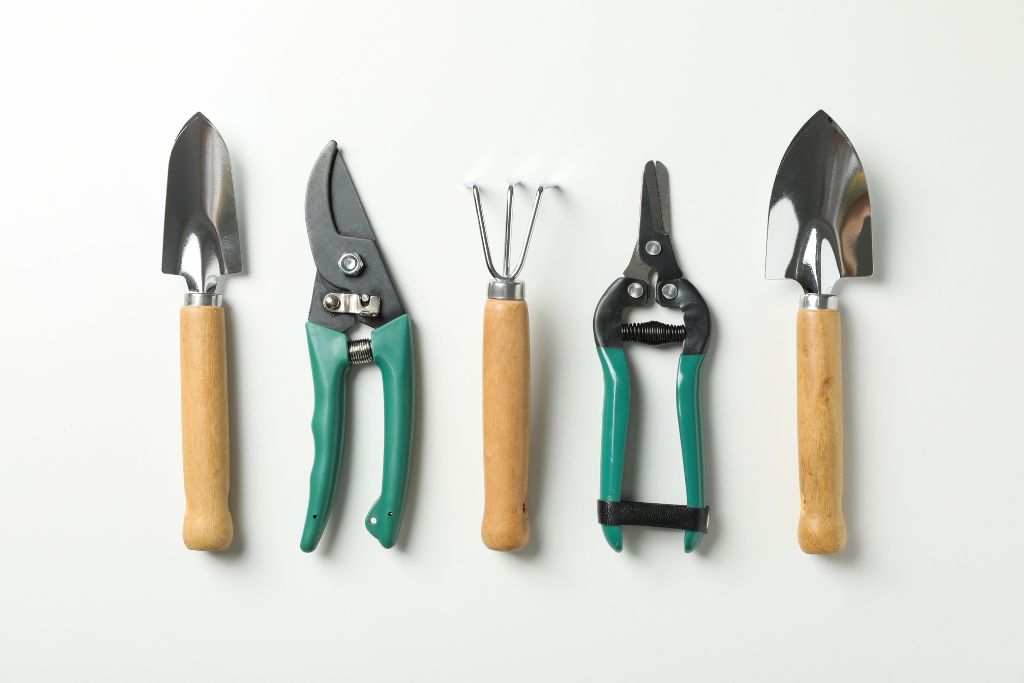
Regular sharpening is an essential practice in maintaining the performance and longevity of your copper gardening tools. Over time, the edges of tools such as pruners, shears, and hoes can become dull, resulting in reduced effectiveness and efficiency during tasks. By incorporating occasional sharpening into your maintenance routine, you can ensure that your tools remain in pristine condition and remain an asset to your gardening toolkit.
Sharpening copper tools is relatively easy and can be done using a sharpening stone or file. Begin by inspecting the tool to determine the correct angle of the edge, as this will provide guidance on how to sharpen it effectively. Then, clean the edge thoroughly with a cloth, removing any dirt or debris that might interfere with the sharpening process.
Next, hold the tool securely and position the sharpening stone or file against the edge of the blade, ensuring that the angle is consistent with the existing edge. Start with the side that needs more sharpening and apply even pressure, moving the stone or file back and forth in a steady motion. Ensure that you maintain the correct angle throughout the sharpening process, making adjustments if needed. After a few strokes, check the blade for sharpness by lightly feeling the edge with your finger, being careful not to cut yourself.
Once satisfied with the sharpness, move on to the other side of the blade to sharpen that side as well. As copper is a relatively soft metal, your tools may require less sharpening time compared to tools crafted from harder metals such as stainless steel. However, it’s essential not to over-sharpen your tools, as excessive metal removal can cause premature wear and reduce the longevity of the tool.
By regularly sharpening your copper gardening tools, you can keep them in top shape, enhancing their performance and lifespan. With diligence and care, your investment in quality gardening tools can serve you well for years to come, making your gardening experience more enjoyable and efficient.
Store tools properly: Hang or store tools in a dry area, away from moisture or humidity, to prevent premature wear and damage.
Gardening can be a rewarding and enjoyable endeavor, and having the right tools can make all the difference in the ease and success of your efforts. Copper gardening tools, in particular, are known for their durability, sharpness, and antimicrobial properties, which can help protect your plants from harmful pathogens. However, these valuable tools require proper care and maintenance to ensure they last a lifetime.
One of the most effective ways to prolong the life of your copper gardening tools is to store them properly when not in use. Hanging or storing your tools in a dry area is essential to prevent premature wear and damage caused by moisture or humidity. Wet or damp conditions can lead to rust or weaken the integrity of the tool’s structure, which can impact its performance and lifespan.
To begin, thoroughly clean your tools after each use by removing any dirt, soil, or debris from the blade and handle. This step not only helps keep your tools in good shape but also prevents the spread of diseases or pests in your garden. Once clean, make sure to dry each tool thoroughly with a cloth or towel. Any lingering moisture can lead to undesirable corrosion and rust.
Now that your tools are clean and dry, it’s time to find an ideal storage location. Consider using a wall-mounted tool rack or pegboard to hang your copper gardening tools. This method allows for proper air circulation around the tool, which can help keep it dry and rust-free. If you have limited space or are unable to hang your tools, an alternative option is to store them in a well-ventilated cabinet or on open shelving. Avoid storing them in damp basements or garages, as these environments can introduce unwanted moisture and humidity.
Regularly inspecting your copper gardening tools for signs of wear or damage is also important. This can help you identify any issues before they become major problems, allowing you to address them promptly and ensure your tools continue to function at their best.
By taking the time to store your copper gardening tools properly and attending to their maintenance needs, you can enjoy the benefits of these high-quality instruments for years to come. Protect your investment and keep your garden flourishing with these simple yet essential care tips.
Apply a protective coating: Occasionally coat your copper gardening tools with a thin layer of natural wax, mineral oil, or beeswax to protect their surface and maintain their appearance.
Copper gardening tools are undoubtedly an investment that any gardener would want to protect and maintain for years to come. One of the best ways to achieve this is by applying a protective coating to your tools periodically. This simple yet effective method ensures the longevity and aesthetic appeal of your copper tools, keeping them as good as new in the long run.
Occasionally, it is important to coat your copper gardening tools with a thin layer of natural wax, mineral oil, or beeswax to preserve and defend their surface from being subjected to wear and tear. These protective coatings act as a barrier, shielding the tools from potential damage caused by exposure to moisture, chemicals, or other environmental factors. Not only does this practice maintain the appearance of your tools, but also helps in preventing the formation of patina or tarnish on the copper surface.
Applying a protective coating on your tools is a relatively simple task and can be carried out with ease. First, ensure that your copper tool is thoroughly cleaned and free from any dirt, grime, or other particles that may interfere with the coating process. Once the tool is clean and dry, sparingly apply a thin layer of wax, mineral oil, or beeswax using a soft cloth or sponge. Be sure to cover all surfaces of the tool, including the hard-to-reach areas. Allow the coating to dry for a few minutes before using the tool again.
It’s important to note that the frequency with which you apply protective coatings depends on the usage and environmental conditions your copper tools are subjected to. However, experts recommend doing so at least once per season to guarantee the greatest possible protection and longevity for your copper gardening tools.
In conclusion, taking the time to periodically apply a protective coating to your copper gardening tools goes a long way in ensuring their durability, functionality, and visual appeal. By following the simple tips discussed above, you can rest assured that your investment in these high-quality tools remains protected and worth every penny.
Inspect tools for damage: Regularly check your copper gardening tools for any damages or signs of excessive wear, such as loose parts, splintered handles, or cracked blades.
Copper gardening tools are known for their durability, unique aesthetic, and numerous benefits compared to their more conventional counterparts. While these tools are built to last, it’s important to establish a routine of regularly checking them for any signs of damage or wear to ensure optimal performance and longevity. In this section, we will discuss some simple yet valuable tips for inspecting and maintaining the various parts of your copper gardening tools.
To begin, be sure to examine your copper gardening tools after each use, taking note of any loose parts or fasteners. This can include screws on the handle, rivets on the blade, or even the connection between the handle and the blade. If you spot any issues, address them immediately to prevent further damage or potential injury.
Next, inspect the handle of your gardening tools. Whether made from wood, plastic, or metal, make sure there are no splinters, cracks, or other indicators of weakness that could compromise the usability and safety of the tool. Any splinters or rough spots on the handle could also lead to blisters or discomfort while working, so it’s crucial to sand these areas down or replace the handle if necessary.
Similarly, closely examine the copper blades of your tools. Copper is a softer metal compared to traditional materials like iron or steel, so it could be more prone to nicks or warping with heavy use. Look for any significant dents, cracks, or bends in the blade, as these can alter the effectiveness of the tool or even make it hazardous to use. In the event of such damage, the blade may need to be professionally re-shaped or replaced altogether.
Lastly, always pay attention to the overall integrity of your copper gardening tools. Even if there aren’t any visible signs of damage, you may notice a change in their performance. For instance, a once-sharp blade may become dull or a once-sturdy handle may begin to feel loose or wobbly. If you encounter these issues, it’s essential to address them promptly—whether through DIY maintenance or consulting with a professional—so your tools continue to meet your needs in the garden.
By consistently monitoring your copper gardening tools for potential damage or wear, you’ll be able to address any issues early on and extend the tools’ lifespan. With proper maintenance, your tools will serve as both functional and beautiful companions in your gardening endeavors for years to come.
Replace worn-out parts: Timely replacement of damaged or worn parts, such as handles or blades, will help maintain the overall performance and longevity of your tools.
Copper gardening tools have been gaining popularity among gardening enthusiasts and for a good reason. Apart from their beautiful appearance, these tools are known for their longevity, sturdiness, and effectiveness in conducting planting tasks. However, just like any other tool, copper gardening tools also require proper maintenance to ensure they serve you for an extended period. One crucial aspect of tool maintenance is the timely replacement of damaged or worn-out parts.
Gardening tools, be it copper or other materials, are subject to a considerable amount of wear and tear over time. This can lead to the degradation of the tool’s overall performance, making it less effective for gardening tasks. With copper tools, the most commonly worn-out parts include handles and blades. By addressing and fixing these issues as soon as they arise, you can maintain the overall performance of your copper tools and even prolong their lifespan.
When it comes to the handles of copper tools, check for any signs of cracking, loosening, or splintering. These issues not only affect the tool’s performance but can also be a safety hazard. If you spot any such problems, it’s best to replace the handle at the earliest to ensure your tools work optimally and safely. One advantage that copper tools offer is that the handles can often be replaced with easily available wooden or fiberglass handles.
In the case of blades, such as those found in trowels or shears, regularly inspect them for dullness or damage. Dull blades can make tasks like pruning or digging more cumbersome and may even cause unnecessary strain on your hands and wrists. An essential part of maintaining copper tools involves keeping their blades sharp and in good working condition. When sharpening is not sufficient, it’s time to consider a blade replacement for the respective tool.
Replacing worn-out parts in your copper gardening tools might seem like an extra chore, but it’s a worthwhile investment in the long run. Not only does it keep your tools functioning at their peak performance, but it also ensures that you have a reliable set of gardening tools for years to come. With timely attention and proper care, your copper gardening tools will serve you and your garden well, making your gardening experience more enjoyable and efficient.
Avoid using tools for unintended purposes: Using copper gardening tools for jobs they were not designed for can damage them and reduce their lifespan. Always use the right tool for the task.
Copper gardening tools are a beautiful and functional addition to any gardener’s collection, but using them for their intended purpose is essential to maintaining their effectiveness and longevity. Although these tools may be enticing to use for a variety of tasks due to their eye-catching appearance and durable nature, it’s essential to ensure that copper gardening tools are only used for their specific functions to avoid unnecessary damage.
For instance, using a copper trowel or cultivator to pry large rocks or tree roots from the ground can cause bending or breakage. The same goes for using pruning shears to cut through wires or thick branches – these actions can quickly dull the blades and potentially damage the tool beyond repair.
Using the right tool for the task ensures that each tool performs at its peak efficiency while minimizing the risk of damaging the copper. By selecting the appropriate tool for each job, you not only protect your investment in these high-quality gardening tools but also ensure the maintenance and upkeep process is as smooth as possible.
When faced with a task requiring a tool that you don’t have, it can be tempting to use one of your beautiful copper gardening tools as a substitute. However, this is the moment to remind yourself to invest in the right tool for the job. Not only will specialized tools make your work more efficient, but it will also protect your copper gardening tools from unwanted damage.
In conclusion, the key to maintaining your copper gardening tools and ensuring their longevity lies in using them for their intended purpose, rather than subjecting them to tasks they were not designed for. By doing so, you’ll preserve their beauty, maintain their function, and keep them in reliable condition for years to come. So next time you’re out in your garden, remember to respect both your tools and the tasks they were crafted to handle, and you’ll enjoy the full benefits of copper gardening tools.
Content are generated with AI, fact checked by editorial team.
Hi there! My name is Aaron and I am a gardening expert from the United States. I have always had a passion for gardening and have been practicing it for years. I have gained extensive knowledge and experience in gardening.



